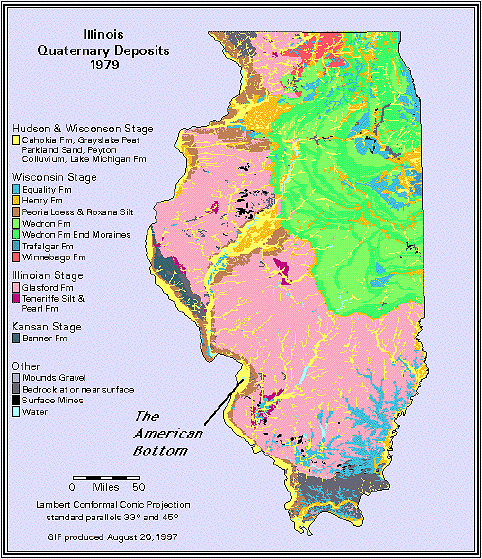
Illinois Quaternary Deposits. Note the fingers of Cahokia (yellow) and Henry (orange) Formations
emanating from the southern and western limits of the Wisconsin stage glaciers (defined by the Wedron
Formation in green).
|
These powerful alluvial processes created the expansive floodplain that we know
now as the American Bottom. The importance of glacio-fluvial deposits in
Illinois and the American Bottom in particular, is illustrated on the map of
Illinois Quaternary deposits. Most surficial deposits in the American Bottom
fall into two types, the Henry Formation - a gravelly glacio-fluvial deposit of
Late Wisconsinan age (~15,000ybp), and the Cahokia Formation - a suite of Late
Wisconsin and early Holocene deposits including the Cahokia alluvium (a silty
clay floodplain deposit), the Peyton Colluvium (a coarse alluvial and colluvial
deposits at the base of valley walls), and the Grayslake Peat (highly organic
lake, pond, and swamp deposits).
|
